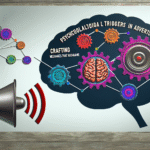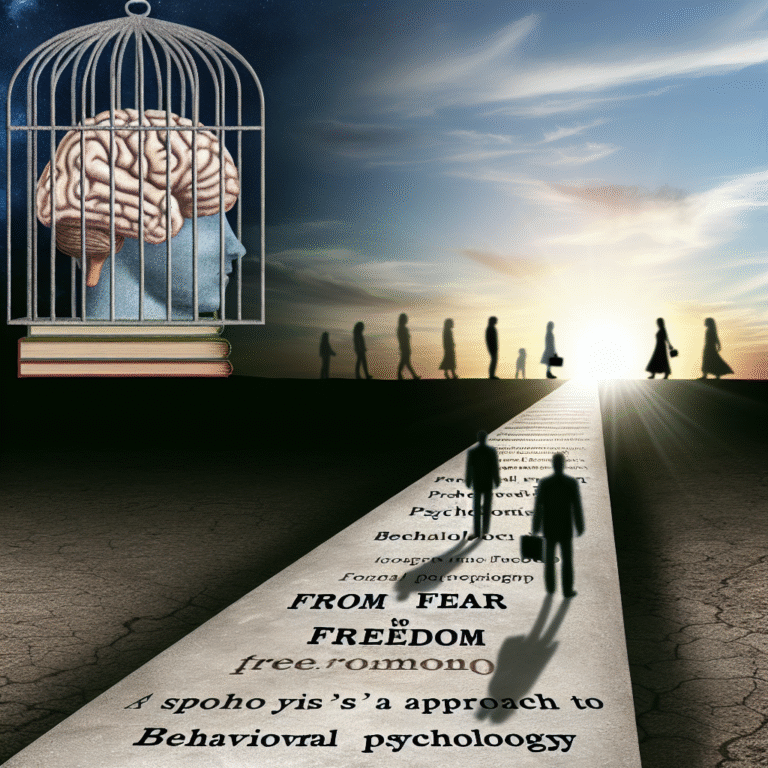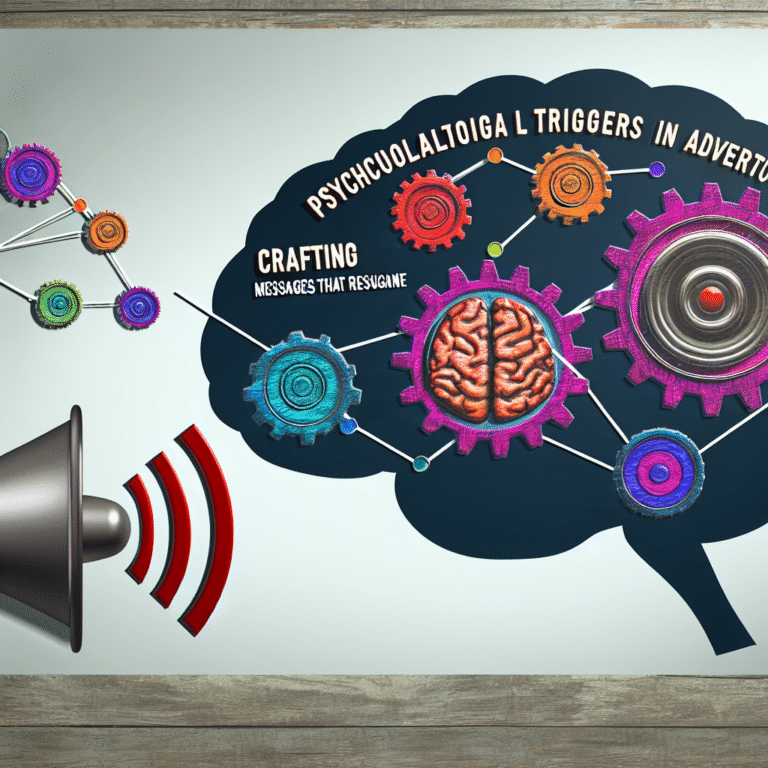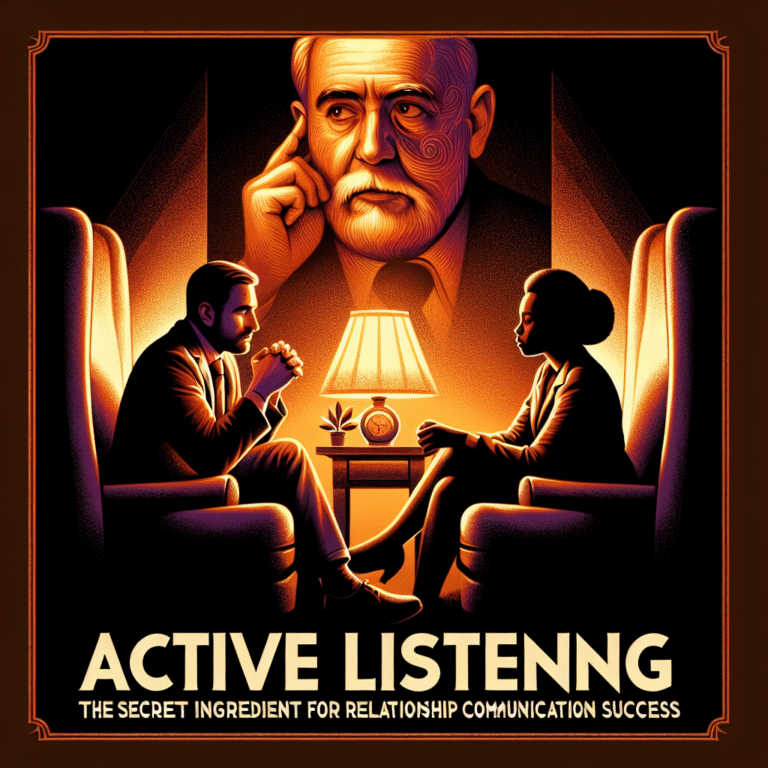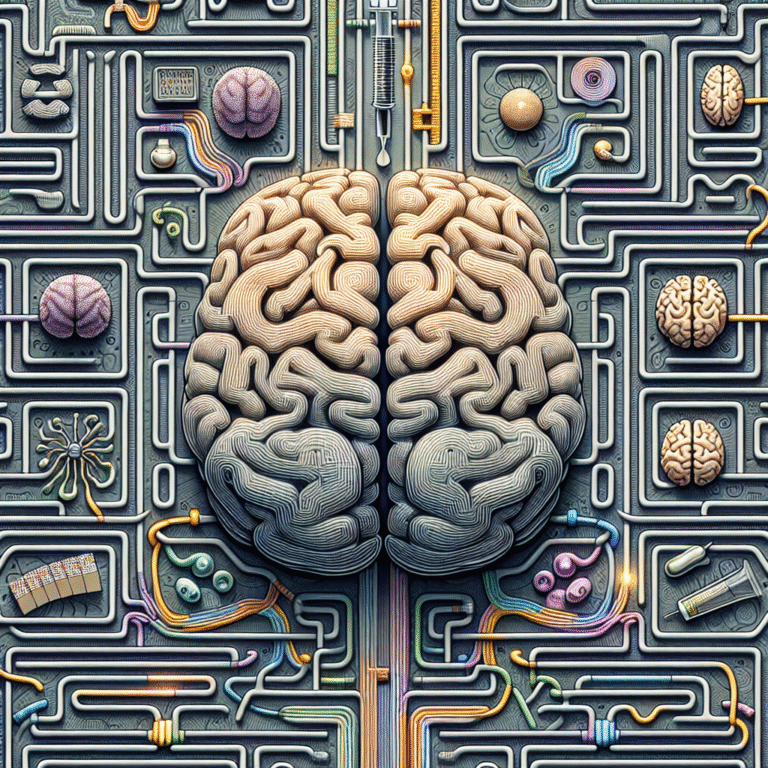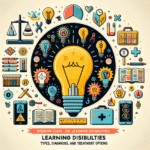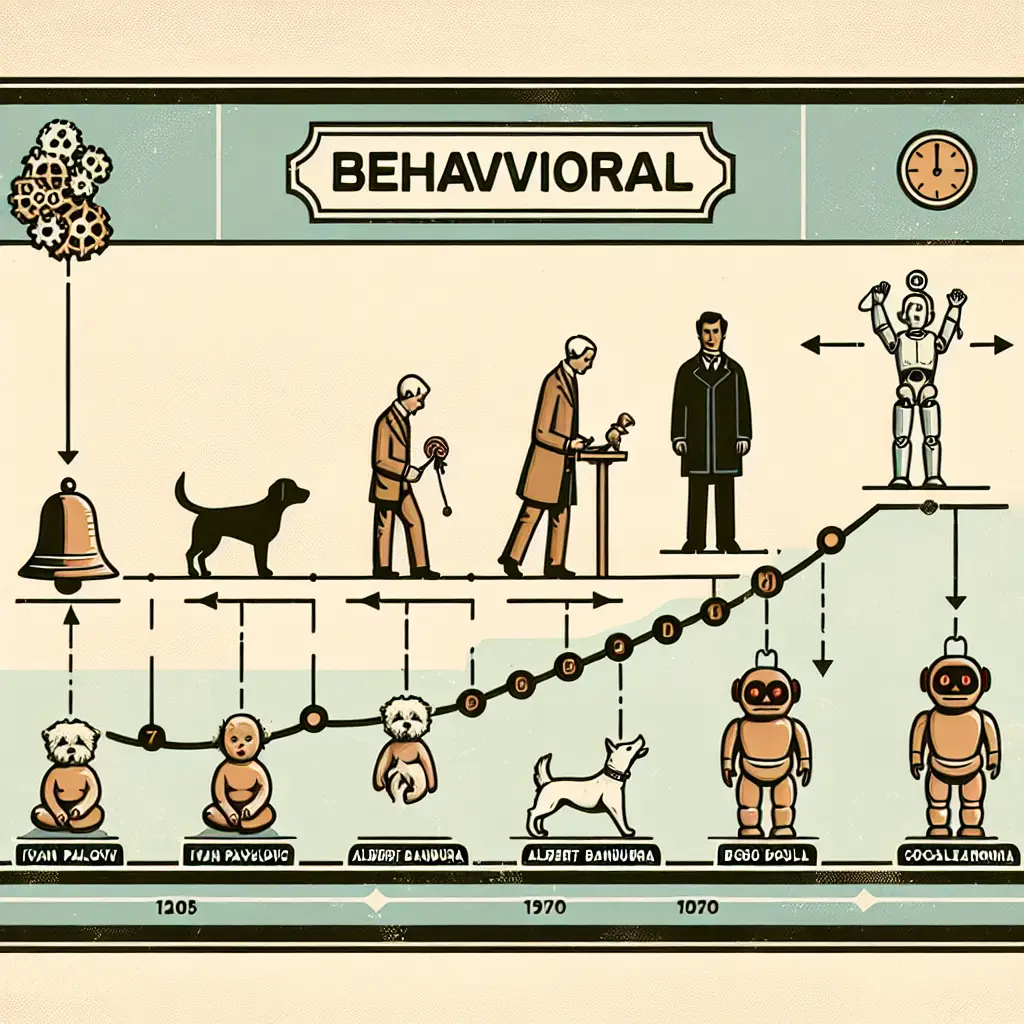
From Pavlov to Bandura: The Ultimate Evolution of Behavioral Theories
Introduction
Have you ever wondered why you react in certain ways to specific stimuli? Why does the sound of a bell trigger memories of food, or why do social environments shape our behavior? The answers to these questions lie in the fascinating world of behavioral theories. It is a journey that begins with the pioneering work of Ivan Pavlov and extends to the profound insights of Albert Bandura. This article, titled From Pavlov to Bandura: The Evolution of Behavioral Theories, explores these influential figures and the progression of their ideas that have shaped our understanding of behavior and learning. Join us as we navigate through classical conditioning, operant conditioning, and social learning theory, revealing how they intertwine to provide a comprehensive view of human behavior.
The Inception of Behavioral Theories: Pavlov’s Classical Conditioning
The Legacy of Ivan Pavlov
Ivan Pavlov, a Russian physiologist, introduced the concept of classical conditioning in the early 20th century through his experiments with dogs. Pavlov’s groundbreaking work revealed that behavior could be learned through association. In his well-known experiment, he rang a bell every time he presented food to dogs. Eventually, the dogs began to salivate merely at the sound of the bell, even when no food was present. This paradigm shift demonstrated that organisms could learn to respond to a previously neutral stimulus if it was consistently paired with an unconditioned stimulus.
Key Concepts in Classical Conditioning
- Unconditioned Stimulus (US): A stimulus that naturally and automatically triggers a response (e.g., food).
- Conditioned Stimulus (CS): A previously neutral stimulus that, after association with an unconditioned stimulus, comes to trigger a conditioned response (e.g., the bell).
- Unconditioned Response (UR): An unlearned response that occurs naturally in reaction to the unconditioned stimulus (e.g., salivation when food is presented).
- Conditioned Response (CR): The learned response to the conditioned stimulus (e.g., salivation in response to the bell).
Real-World Application: Phobias and Aversion Therapy
Pavlov’s work laid the groundwork for understanding and treating phobias. Case studies involving aversion therapy, where undesirable behaviors are paired with negative stimuli, illustrate the practical application of classical conditioning. For instance, patients with alcohol dependency have been treated by associating the taste of alcohol with nausea-inducing drugs, creating a lasting aversion to drinking.
| Condition | Unconditioned Stimulus | Conditioned Stimulus | Unconditioned Response | Conditioned Response |
|---|---|---|---|---|
| Alcohol Dependency | Nausea-inducing drug | Alcohol | Nausea | Aversion to alcohol |
Analyzing Pavlov’s Contributions
Pavlov fundamentally changed how psychologists thought about learning and behavior. His discoveries emphasized the importance of environmental stimuli in shaping responses. His contributions further encouraged subsequent research, which eventually led to the development of behaviorism as a psychological perspective.
The Rise of Behaviorism: B.F. Skinner and Operant Conditioning
B.F. Skinner’s Transformative Insights
Building on Pavlov’s ideas, B.F. Skinner, an American psychologist, advanced the field through his exploration of operant conditioning. Skinner’s focus shifted from passive learning through associations to active learning through consequences. He developed the concept of reinforcement and punishment as mechanisms to shape behavior.
Key Concepts in Operant Conditioning
Reinforcement: Any consequence that strengthens or increases the likelihood of a behavior.
- Positive Reinforcement: Adding a desirable stimulus to increase behavior (e.g., rewarding a child with a treat for doing homework).
- Negative Reinforcement: Removing an aversive stimulus to increase behavior (e.g., removing a loud noise when a desired behavior occurs).
- Punishment: Any consequence that decreases the likelihood of a behavior.
- Positive Punishment: Adding an aversive stimulus to decrease behavior (e.g., scolding a child for misbehavior).
- Negative Punishment: Removing a desirable stimulus to decrease behavior (e.g., taking away a toy for not sharing).
Case Study: Classroom Management Through Operant Conditioning
In educational settings, operant conditioning principles are regularly applied to manage behavior and reinforce learning. For instance, a teacher might use a token economy system where students earn tokens for good behavior that can later be exchanged for privileges or rewards. This method illustrates how positive reinforcement can lead to a more conducive learning environment.
| Behavior | Reinforcement Type | Outcome |
|---|---|---|
| Completing Homework | Positive Reinforcement | Increased homework completion rates |
| Disruptive Behavior | Positive Punishment | Decreased occurrences of disruptions |
Analyzing Skinner’s Contributions
Skinner’s work emphasized the role of external factors in shaping behavior, contrasting with the more passive learning emphasized by Pavlov. He advocated for observable behaviors over internal mental processes, reinforcing the behaviorist approach’s empirical nature. His research opened doors for various practical applications, such as behavioral therapy, education, and animal training.
The Social Learning Theory: Albert Bandura’s Impact
Bandura’s Shift to Observational Learning
While Pavlov and Skinner laid the groundwork for understanding behavior through conditioning, Albert Bandura expanded behavioral theories to incorporate cognitive aspects, shifting the focus to observational learning. His social learning theory posits that individuals learn behavior not only through direct experiences but also by observing others.
Key Concepts in Social Learning Theory
- Observational Learning: Acquiring new behaviors by watching others.
- Modeling: The process of imitating the behavior of others.
- Reciprocal Determinism: The interaction between personal factors, behavior, and environmental influences.
Case Study: The Bobo Doll Experiment
Bandura’s famous Bobo doll experiment demonstrated the concept of observational learning. In this study, children observed adults behaving aggressively towards a Bobo doll. Later, when given the opportunity to play with the same doll, those who had observed the aggressive behavior were more likely to replicate it. This landmark study underscored the powerful effect of role models in shaping behavior.
| Condition | Outcome |
|---|---|
| Children observe aggression | Increased likelihood of aggressive play |
| Children observe kindness | Increased likelihood of helpful behavior |
Analyzing Bandura’s Contributions
Bandura’s emphasis on cognitive processes and the social context in understanding behavior marked a significant departure from traditional behavioral theories. His ideas highlighted the importance of social influences and environment in shaping actions. The introduction of concepts like self-efficacy and observational learning broadened the scope of psychological research and intervention.
Comparative Analysis: From Pavlov to Bandura
The Evolution of Learning Theories
The journey from Pavlov to Bandura represents a natural progression in behavioral theories, illustrating the shift from simple conditioning mechanisms to complex cognitive processes in learning. Each theorist contributed uniquely, addressing different facets of behavior:
| Theorist | Key Contribution | Focus |
|---|---|---|
| Ivan Pavlov | Classical Conditioning | Respondent learning |
| B.F. Skinner | Operant Conditioning | Active learning through consequences |
| Albert Bandura | Social Learning Theory | Observational and cognitive learning |
Implications for Understanding Behavior
Collectively, these behavioral theories offer a multifaceted understanding of human actions. The interaction of conditioning, reinforcement, and observational learning provides a comprehensive framework for analyzing behavior across various contexts—be it in education, therapy, or the workplace.
Conclusion
From Pavlov to Bandura: The Evolution of Behavioral Theories illustrates a rich tapestry of thought in psychology that has advanced our understanding of learning and behavior. The insights from classical conditioning, operant conditioning, and social learning continue to have profound implications for education, mental health, and behavior modification.
As we reflect on the contributions of these theorists, it becomes clear that our understanding of behavior is not static. Continuous research and application of these theories can unlock new pathways for personal and societal transformation. These theories remind us that learning is not just a product of isolated experiences; it is an ongoing process influenced by our environment, our behaviors, and the behaviors we observe in others.
Actionable Insights
- For educators, integrating diverse behavioral strategies can enhance learning environments and motivate students.
- For individuals seeking personal growth, understanding these theories can help identify triggers and learn adaptive behaviors through observation and reinforcement.
- Practitioners in psychology can utilize these theories to develop tailored interventions reflecting individual behaviors and contexts.
FAQs
1. What is classical conditioning, and how does it work?
Classical conditioning is a learning process where a neutral stimulus becomes associated with a stimulus that produces a natural response. It works through repeated pairings, leading to a learned response to the neutral stimulus.
2. How does operant conditioning differ from classical conditioning?
While classical conditioning is based on associations between stimuli, operant conditioning is based on the consequences of a behavior. It emphasizes reinforcement and punishment to shape behavior.
3. What role does observational learning play in behavior?
Observational learning involves acquiring new behaviors by observing others. It shows that individuals can learn not just through direct experiences, but also by watching others and the consequences of their actions.
4. Can these behavioral theories be applied in real life?
Yes! These theories are widely applied in fields like education, therapy, and behavior modification to promote positive behavior, learning environments, and personal development.
5. How can understanding these theories benefit educators?
Educators can use insights from these theories to create effective teaching strategies, manage classroom behavior, and motivate students through reinforcement and modeling desirable behaviors.
By exploring From Pavlov to Bandura: The Evolution of Behavioral Theories, we unlock the potential to harness these principles in various aspects of life, from personal growth to educational practices. Embracing these insights is essential for fostering an understanding of human behavior in our rapidly changing world.

